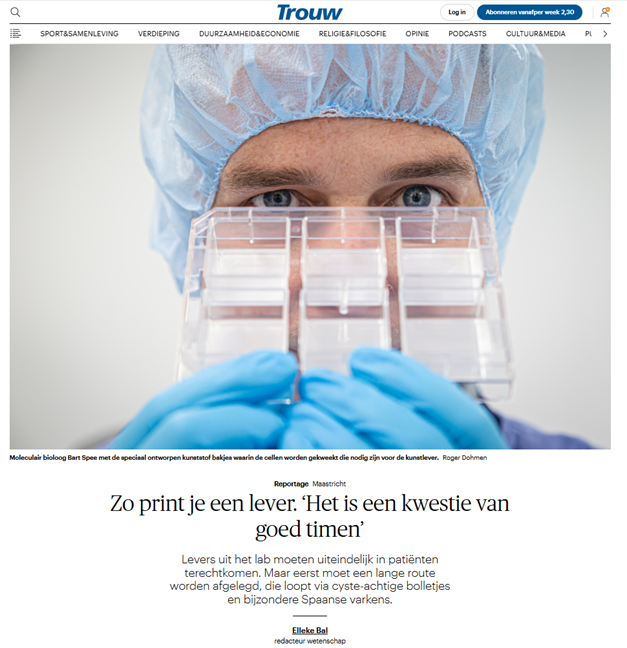NEOLIVER: This is how you print a liver
Elleke Bal, science editor in Trouw’s newspaper, has recently published a report about how the EU-funded NEOLIVER project is working on the development of bioprinted livers to overcome the current shortage of liver donors.
Only in the Netherlands, the number of liver transplants using livers from deceased donors rounds the two hundred each year. The urgency to develop livers in the lab comes from the fact that one in five patients on the waiting list dies before an organ becomes available.
Through a visit to the biomedical company ReGEN Biomedical in Maastricht (Netherlands) guided by Bart Spee, coordinator of NEOLIVER project, Elleke’s report covers the relevance and the challenges of developing bioprinted organs at the lab.
“Livers from the lab must eventually find their way into patients“ – Bart Spee
Bart describes in the interview the approach NEOLIVER project is following and how all the partners involved are participating in the project in constant collaboration.
Nadja Hansen and Kenny van Kampen, NEOLIVER team members working at ReGEN Biomedical showed to Elleke Bal where and how the first two steps of NEOLIVER approach take place: cultivating and propagating cells (1) and automation process to build tissue (2).
The third step in NEOLIVER approach is the printing process (3), which currently takes place at PhosPrint, NEOLIVER‘s partner based in Athens (Greece). The bioprinting method allows to replicate the 3D structure of the liver. Reproducing a liver’s vascular system is crucial to obtain fully functional constructs ready for transplantation (4), the latest step of NEOLIVER approach.
Prior to in-human trials, pre-clinical validation of the constructs will take place at IISA, NEOLIVER‘s partner based in Zaragoza (Spain). According to Bart, bioprinting and transplanting are guaranteed and the challenges of the project will raise up once the functionality of the constructs is tested in pigs.

